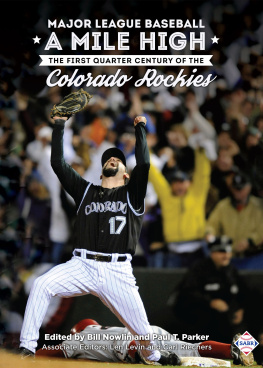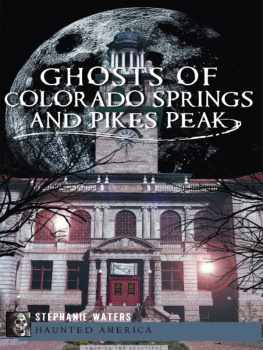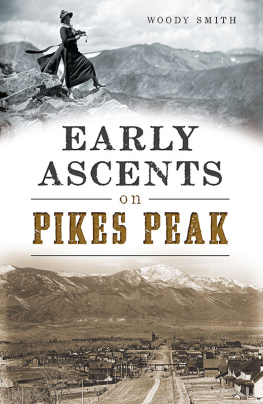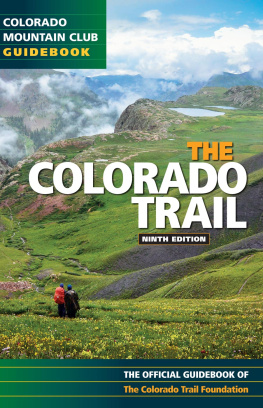Contents



Janet Robertson. Photo by David Robertson.

Introduction 2003 by the University of Nebraska Press
1990 by the University of Nebraska Press Photographs by Janet Robertson
1990 by Janet Robertson All rights reserved Manufactured in the United States of America
First Nebraska paperback printing: 1991 The Library of Congress has catalogued the hardcover edition as follows: Robertson, Janet, 1935 The Magnificent mountain women adventures in the Colorado Rockies/Janet Robertson.
p. cm. Bibliography: p. Includes index.
1. Women mountaineers-Colorado-Biography.
2. Women-Colorado-Biography.
3. Rocky Mountains-Biography.
I Title. GV 199.9.R631990
796.5' 22' 0922-dc2o
[ B ] 89-14717 CIP
ISBN :0-8032-3892-4 (el.: a1k. paper)
ISBN : 0-8032-8995-2 (pa.: alk. paper)
ISBN : 978-1-4962-0631-2 (epub)
ISBN : 978-1-4962-0632-9 (mobi)
The publisher does not have any control over and does not assume any responsibility for author or third-party websites or their content.
Introduction
ARLENE BLUM
In The Magnificent Mountain Women: Adventures in the Colorado Rockies, Janet Robertson brings us the exciting history of the first women to climb and adventure in Colorados Rocky Mountains.
I wish I had known these stories when I began climbing in the 1960s. After growing up in an overprotective family in the Midwest, I was eager for adventure when I reached Reed College in Portland, Oregon, in 1962. My handsome mountain-climbing, chemistry-lab partner invited me to climb Mt. Hood, hanging in the sky above Portland. Incredulous that human beings could actually set foot in these exalted realms, I agreed to try the climb. We began the ascent in the dark, and when the sun rose, illuminating a wonderland of blue and green ice towers and crevasses, I was overcome with the peace and beauty of the high alpine world. I had discovered my spiritual home above the clouds on the snowy Cascade volcanoes, and I returned again and again.
After several years of climbing with my Reed friends (mostly men), I wanted to try ascending more challenging peaks. I inquired about a guided trip to Denali, the highest peak in North America, but women were allowed to go only as far as base camp to help with the cooking. So I joined a guided trip to Mt. Waddington in British Columbia, where my guide said that anyone claiming to be a woman climber was either not a good climber or else not a real woman.
Realizing that as long as I climbed primarily with men my own contribution to expeditions would be doubted, I decided to organize an all-woman team to attempt Denali. The only mountain over 20,000 feet in a polar region, Denali rises 18,000 feet from the surrounding tundra and is considered one of the coldest and toughest mountains on earth. Much of the climbing communityeven women climbersquestioned whether women possessed the strength and stamina required to carry the mammoth loads and the leadership skills necessary to ascend this Arctic giant. The team members were limited by our lack of knowledge of the women who came before us, such as those profiled in The Magnificent Mountain Women . These stories demonstrate repeatedly that women do have the physical abilities, emotional stability, determination, and interpersonal skills necessary to ascend difficult peaks and that womens lives can benefit from the challenges of the mountains.
In July of 1970, our six-woman team reached the 20,320-foot-high summit of Denali, the first all-woman team to do so. When our team leader collapsed just below this Arctic summit, we succeeded in getting her down safely, a much more difficult endeavor than the climb itself. For me the question of whether or not women could climb the worlds highest mountains was answered. Of course we could.
Nevertheless, in the early 1970s all the mountains soaring above 8000 meters (26,200 feet) had been climbed by men, but not a single woman had reached this height. I resolved to organize an all-woman climb of Annapurna I, the worlds tenth highest peak, located in the small Himalayan country of Nepal, to give women an opportunity to climb this high. In the mid-1970s Japanese women did climb Manaslu and Everest, and a Chinese woman climbed Mt. Everest, but no American woman had reached these heights.
In 1978 I led the ten members of the American Womens Himalayan Expedition, who ranged in age from twenty to fifty, through storms, icefalls, and avalanches to the top of Annapurna Is 26,500-foot summit, making the first ascent by an American or by a woman. Then I went on to organize and lead a joint Indian-American womens team in making the first ascent Bhrigupanth, a 22,300-foot-high ice peak in India.
I have been told that these womens expeditions and my account of the Annapurna expedition, Annapurna: A Womans Place , have served as an inspiration to both women and men alike in striving to achieve challenging objectives. The attention our womens climbs garnered all over the world expanded opportunities for women in adventure sports and helped change the general perception of womens abilities in physically demanding and dangerous endeavors.
So too do the intriguing women whose lives Janet Robertson has rescued from obscurity serve to motivate and inspire readers. Robertson should be thanked for her meticulous research in finding both the little-known stories and also photographs of the early women who pioneered climbing and working among the high peaks of Colorado. Beginning with Julia Archibald Holmess 1858 ascent of Pikes Peak and Addie Alexanders 1871 climb of Longs Peak, a long line of educated, energetic, and determined women reached the summits of the high peaks of Colorado. Usually leaving behind their long skirts and the limiting views of women during their day, these memorable women made the mountains of Colorado their playground and their home. In so doing, they enriched their own lives and moderated the rough pioneer society of their day.
Robertsons research brings to life previously unknown women, such as Rose Pender, who climbed Pikes Peak in 1883; Carrie Welton, who perished trying Longs Peak in 1884; and Victoria Broughm, who tackled Longs Peak solo in 1906; and Anne and Isabel Pifer, who guided hundreds of people up Longs Peak from 1920 to 1924.
Using unpublished letters and manuscripts, she sleuths out new information, such as suggestions of a closer relationship between Isabella Bird Bishop and her guide, Rocky Mountain Jim, than is portrayed in Bishops classic account, A Womans Life in the Rocky Mountains. Interestingly enough, many of these mountain women married late in life or ended up marrying their mountain companions, their mutual joy of the heights leading to the shared bond of matrimony. For example, Esther Burnell, who in 1916 homesteaded in what is now Rocky Mountain National Park, married Enos Mills, the local environmentalist who first told her about the Park.
The adventures of these mountain women culminate in ascents of the steep Diamond face of Longs Peak by the first all-woman team of Molly Higgins, Stephanie Atwood, and Laurie Manson, and a free ascent by Louise Shepherd and Jean (Ruwitch) Goresline. We are also introduced to memorable women like Coral Bowman, who started the Great Herizons Rockclimbing School, and Gudy Gaskill, who created the 470-mile-long Colorado Trail across the top of Colorado.











